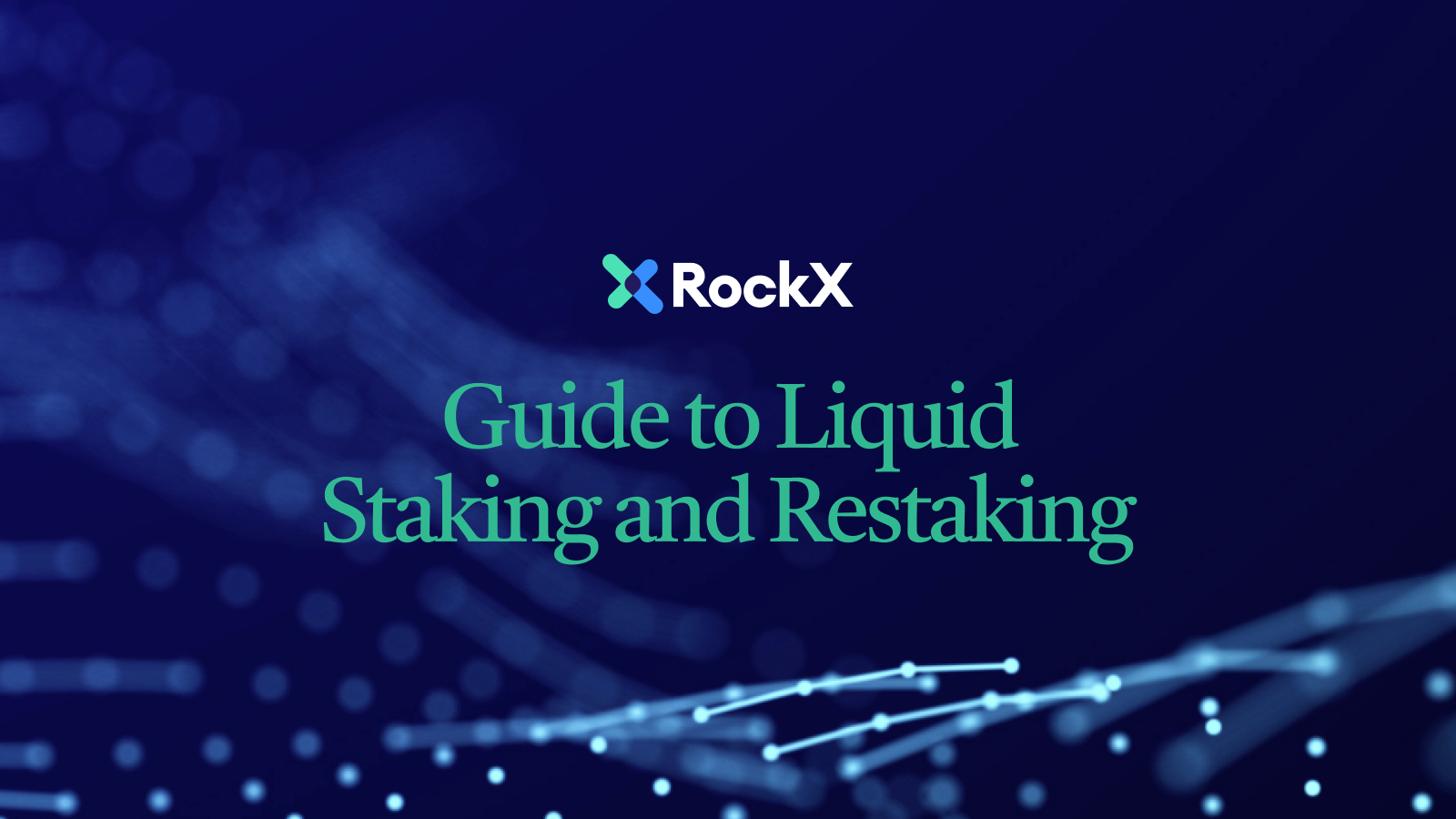AI may be the word of the year in 2023, as well as the crown prince of the crypto industry. But one particular DeFi sector is giving it a run for its money: liquid staking. It has become the second largest DeFi sector with market cap skyrocketing since 2022 lows. From about $14 billion in total value locked (TVL) in early 2023, it stands at about $85 billion after a year.
It has also spun off lucrative concepts like restaking.
Compared to traditional staking, it allows wiggle room for users to unlock more value out of their staked crypto.
This is made possible owing to the developments of the EigenLayer, with the recent M2 upgrade heralding even greater advancements for the restaking ecosystem built on Ethereum.
Let’s unpack all you need to know about liquid staking and restaking — from its workings and profitability to supported cryptos and of course, a comparison of the most popular liquid staking protocols to ease the paralysis of choice.
What is staking all about?
There are three types of staking to cover: Native staking, liquid staking, restaking.
In native staking, users delegate their crypto to a validator in a self-custodial manner, or set up their own validator, to participate in network consensus and earn rewards for securing the network. Some self-custodial wallets offer an interface for users to stake and delegate their crypto assets.
Liquid staking is a novel concept among Proof-of-Stake (PoS) blockchains that allows users to stake digital assets while retaining liquidity. Unlike the traditional way of native staking, where assets are subject to staking and unbonding periods, stakers get a derivative token representative of their staked assets, which can be traded, lent, or utilized within other DeFi ecosystems.
This derivative token tracks the staked assets and accrues staking rewards, enabling the holder to earn passive income while participating in ancillary DeFi activities.
Imagine putting money in a fixed deposit, but getting a token that you can use elsewhere while your money continues to compound interest — all without ‘early surrender’— thus eliminating opportunity costs.
Lastly, restaking is a more advanced strategy where you liquify your already staked assets and put them into another DeFi protocol to earn even more rewards. Specifically, in native ETH restaking, your staked ETH can be further put to work again by leveraging on protocols such as EigenLayer, which are supported by RockX. This helps secure the Ethereum blockchain and apps built on it.
How does liquid staking work?
When a user stakes crypto assets, these are sent to a smart contract and held there. As mentioned earlier, the user then receives a derivative token, often in a 1:1 ratio with the staked asset. It represents not just the staked asset, but also ongoing participation and reward entitlement within the network. The derivative token can be further delegated or used in other DeFi activities without affecting the staking rewards.
Just like Jekyll can’t be talked about without Hyde, you can’t talk about stakers without validators. Their role is to validate network transactions and maintain the network’s security, for which they are rewarded with staking fees. These rewards are gotten from the smart contract and distributed proportionally among derivative token holders. Depending on the blockchain, only the top validators with the highest staking amounts get rewarded.
Liquid staking vs Restaking: What does restaking bring
Unlike liquid staking, which issues tradable tokens representative of the staked assets, the latest concept of restaking allows users to leverage existing staked ETH for additional purposes. To put it into perspective, the brilliance of restaking lies in its ability to ‘multi-task’.
Here’s where EigenLayer comes in. This innovative protocol on the Ethereum network unlocks the potential of restaking by enabling users to automatically put their already-staked ETH (from protocols like RockXor Rocket Pool) to work.
This restaked ETH can then secure other applications built on Ethereum, essentially earning extra rewards on top of the user’s base staking returns.
Ether.fi and other similar leading protocols like RockX are at the forefront of supporting native ETH restaking on EigenLayer, creating a highly rewarding staking experience for all parties.
Validators benefit from earning restaking rewards, developers gain from a more robust network infrastructure, and Ethereum and other actively validated services (AVS) on EigenLayer benefit from better security and a more dynamic ecosystem.
As of the time of writing, EigenLayer is the top restaking protocol with approximately $12 billion in total value locked (TVL). Its current functionality enables it to support liquid ETH restaking and native ETH restaking, based on its EigenPod smart contract. Although we are seeing restaking alternatives such as Karak, Octopus Network, and Repl, they don’t come close to the scale and reach of EigenLayer. Interestingly, the closest runner-up Karak (about half a billion in TVL) is shaping itself up to be the next big thing when they announced their ‘universal restaking’ innovation, powered by the entire cryptoeconomy. This lets users restake any asset on any blockchain, so as to break out of the limitations of the ETH-only environment.
You can read more details of the EigenLayer and ways to get started on restaking on our extensive blog coverage.
How to get started
In most cases, there’s no minimum amount required to start staking. But you do need a few prerequisites, chiefly a digital wallet.
- Research and select a protocol: Compare various liquid staking protocols by their performance, security features, and the digital assets they support.
- Set up a digital wallet: Choose one that’s compatible with the assets you wish to stake. It’s your gateway to the blockchain ecosystem.
- Connect wallet: Connect your digital wallet with your choice of liquid staking platform.
- Deposit assets: Send the digital assets you intend to stake from your wallet to the protocol. Look out for fees and other staking requirements.
- Choose your staking option: There may be different staking options based on staking periods and expected returns.
- Receive liquid tokens: Upon staking your assets, you’ll receive derivative tokens representing your staked assets. These tokens mirror the value of your staked assets and accrue staking rewards over time.
- Go forth and wander: Explore opportunities to use your derivative tokens. You can participate in liquidity pools, trade on exchanges, or transact with merchants that accept them.
What are the risks of staking?
While liquid staking appears to be a thrilling strategy to maximize returns, it is not devoid of risks. One of them is the smart contract risk inherent in DeFi projects. Smart contracts, the backbone of liquid staking protocols, are susceptible to vulnerabilities and hackers’ exploits.
In one high-profile attack in late 2023, DeFi lending protocol Euler Finance was victimized by a $197 million heist through doctored flash loans.
And that was only one of several cases, with names like Mixin Network, Poloniex and Atomic Wallet being part of the victim list.
Let’s look at the other risks you might be exposed to.
Regulatory uncertainty
Additionally, the regulatory landscape for DeFi and staking protocols remains uncertain and varies significantly across jurisdictions. This regulatory ambiguity poses a substantive risk, as future regulations could adversely affect the operation and profitability of liquid staking projects.
Liquidity risk
Another critical point of consideration is the liquidity risk associated with the derivative tokens issued by liquid staking protocols.
In theory, these tokens should be readily tradable and maintain close parity with the underlying staked assets.
However, in practice, market conditions or lack of demand can lead to liquidity constraints, making it difficult for holders to exit their positions without incurring losses.
Slashing
Finally, there’s the possibility of ‘slashing’, a punitive measure that reduces your staking rewards when validators of a protocol are guilty of misconduct that compromises the network’s security and integrity.
Don’t forget that you’re part of a larger pool of players in liquid staking, and that puts you at the mercy of collective behavior.
How to choose a suitable staking protocol for yourself
What makes a good, credible liquid staking protocol? It goes beyond APYs offered on supported crypto assets. Watch for the following factors in your assessment:
- Security: Critical to any investment decision is the security of the protocol. Pay close attention to the track record, any incidence of breaches or funds loss, and the robustness of their smart contracts.
- Lock-up period: Flexibility is a key advantage of liquid staking. Evaluate whether there’s a lock-up period for staked assets which may affect your strategy.
- Fees: Scrutinize platform fees, withdrawal fees, and any hidden charges that may impinge upon profit margins.
- Track record: Analyse the historical performance and decisions of the protocol. A history of innovation and successful navigation through challenges can assure you of its sturdiness.
- Staking rewards: Compare the reward structure across protocols. Higher rewards can be enticing but assess the risk-return balance carefully.
- Total Value Locked (TVL): A higher TVL indicates a strong trust in the protocol from the community. It’s a crucial metric for understanding protocol health and adoption.
- Automated Validator Selection: Protocols that automate the selection of validators minimize the risk of centralisation and bias, ensuring a healthier, more secure network.
- Number of active validators: A high number of active validators not only contributes to network security but also indicates a vibrant and active community. This is a positive sign of network health and longevity.
Comparison: Best protocols for liquid staking and restaking
Comparison table
NOTE: The data presented in the table are accurate as of April 2024. Fees are subject to changes over time. Do check the protocol’s website for the latest updates.
Introducing RockX’s native restaking: Supercharge yields by the power of EigenLayer
Since debuting on the scene, RockX has grown from strength to strength to be one of the leading institutional-grade staking solutions provider. At the start of 2024, we added native ETH restaking to our already established spread of staking services — this reinforces our commitment to helping institutions adopt blockchain technologies with ease.
RockX has not left out the everyday staker and validators; with competitive fees, zero charge on protocol rewards, and pool solutions on execution layer rewards, we’re uniquely positioned to optimize restaking yields.
Behind the scenes, working with partners SSV.network and Peckshield has helped set the standard for security, compliance and transparency. On the front of high-profile partnerships, we’ve had the pleasure of partnering with Amber Group for a boost in liquidity, as well as with Matrixport’s Cactus Custody to fortify security and plug gaps in the Ethereum ecosystem in the staking process. In native ETH restaking, users also get institutional-grade security thanks to the EigenPod Manager, while the oracle-less service reduces potential vulnerabilities.
Other than being one of the top 10 global validators by Ethereum penetration, RockX opens users up to the powers of EigenLayer to natively restake ETH, potentially generating additional rewards (EigenLayer points, Bedrock Diamonds) on top of the base staking yield. You’d essentially be earning interest on your interest, and the rewards are uncapped.
By running the EigenDA AVS, RockX helps secure AVSs for storage and accessibility of data, and staking users enjoy enhanced security and scalability of dApps built on the Ethereum blockchain.
At the time of writing, RockX has nearly 426k ETH restaked through them, bringing the TVL of ETH on RockX to over US$1.3bn.
Are you ready to stake your claim in the future?
The rapid innovations in staking leave much to be desired, and we haven’t even ventured into the depths of EigenLayer M2.
As we’ve seen with past upgrades like the Merge, Ethereum’s evolution paves the way for even more efficient staking solutions. The recent EigenLayer M2 upgrade is sure to further advancements in the restaking space.
And onto the staking players, the arrival of liquid restaking protocols like RockX’s Bedrock is contributing to a shift from CeFi to DeFi. While native staking still plays a crucial role, liquid restaking offers advantages like flexibility and liquidity.
If you’ve got half a mind to go all the way with your crypto yields, choosing a liquid staking protocol that checks all the industry benchmarks is only the smart thing to do — you can do away with the unnecessary worries of security lapses, staking limitations, and yield-slashing as you shoot for the moon.









